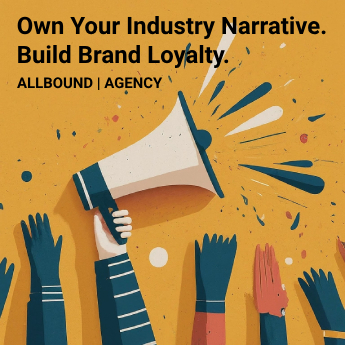Isn’t it time your business stopped chasing leads and started attracting them like a magnet? Stick around if you’re keen on turning that desire into reality.
In the simplest terms, Inbound Marketing is a strategy that focuses on attracting customers by creating valuable content and experiences tailored to them. Unlike outbound marketing, where marketers fight for potential customers’ attention, inbound marketing is all about delivering solutions and opportunities that naturally align with the desires of customers, fulfilling their needs rather than interrupting their pathways.
Now, isn’t that a refreshing angle to business growth? Dive deeper with us as we further unpick the many marvels of Inbound Marketing.
Understanding Inbound Marketing
Inbound marketing, as aptly described by Hubspot, is a methodology engineered to usher potential customers to your business organically, without aggressively pursuing or interrupting them. It’s all about furnishing valuable content that aligns neatly with the needs and aspirations of a targeted audience.
Introduction to Inbound Marketing
In the inundated world of marketing, inbound offers a breath of fresh air. It emphasizes forging long-term relationships with customers by providing them meaningful and contextually relevant experiences that resonate with them on a personal level.

Exploring the fundamentals of inbound marketing methodology
Central to inbound marketing lies the belief in fostering relationships. It champions the customer, and every step, right from attracting to engaging and delighting, is invested towards collating a journey that directs the customer home – to your product or service.
The evolution of inbound marketing in the digital era
The advent of the digital era has changed the face of marketing, especially inbound. The spotlight is now on creating targeted content, technologically-advanced SEO, and fostering genuine engagement through social media. All crafted toward a singular goal: customer satisfaction.
Inbound vs. Outbound Marketing: A comparative analysis
As opposed to outbound marketing, which focuses on casting a wide net to catch potential leads, inbound marketing tailors experiences highlighting the needs of the customer. It’s the difference between cold-calling scores of people and creating valuable blog posts that potential customers seek to solve their problems.
Core Components of Inbound Marketing
Inbound marketing can be broken down into three fundamental elements: attracting the right audience, engaging potential customers, and delighting them for ongoing success.
Attracting the right audience with valuable content
This is the first step, and it involves publishing high-quality content that aligns with the pain points of your target audience. Think blog posts, social media updates, eBooks, and informative webinars.
Engaging potential customers with insights and solutions
Provide insights and solutions that are relevant to the customer’s needs. This step could involve lead forms, email marketing, and providing bespoke solutions that elevate the customer’s brand experience.
Delighting customers for long-term success and advocacy
The successful execution of the first two steps should naturally lead to the third – where customers become evangelists of your brand. Offering stellar support, soliciting feedback and rewarding customer loyalty all contributes to the delight aspect.
Importance of Inbound Marketing
Inbound marketing is crucial in today’s business landscape, not just for creating brand momentum, but just as importantly, for aligning business focus with consumer wants and needs.
Building brand momentum through customer success stories
Success in inbound marketing culminates in the form of customer success stories. These stories, a result of excellent content and engagement, carry huge weightage in the realm of marketing. They serve as proof of concept and nurture trust in potential customers.
Aligning business focus with inbound marketing strategies
Inbound marketing encourages businesses to attune themselves to the actual needs of customers. Through personalized engagements and content, it necessitates a structure that revolves around customer satisfaction and genuine problem-solving, thereby inherently aligning the organizational focus with that of the customer’s.
In conclusion, inbound marketing is more than a mere strategy. It’s a philosophy that believes in the power of the customer. It places them right where they should be – at the heart of the business ecosystem. As marketers, it’s time we stopped asking, “How do we sell more?” and started pondering, “How can we help more?” Because ultimately, the brands that will thrive in the future, are those that value customer service over customer acquisition.
Developing an Inbound Marketing Strategy
Creating valuable and informative content is the heart of inbound marketing. As mentioned by inbound guru, Gary Vaynerchuk, “Content is King, but Context is God.” In other words, it’s not only about producing content; it’s about producing the right content that resonates with your target audience and directly addresses their needs and desires.

When you form content that speaks directly to your audience’s interests, needs, and pain points, you attract the right visitors to your website. However, having great content isn’t enough. Specifically, in the digital era, your content needs to be seen and ingested. That’s where an optimized SEO strategy comes into play.
By considering and executing robust SEO strategies, you ensure your content gains visibility on search engines, thereby enhancing your online presence and reach. But remember, good SEO isn’t only about keywords and algorithms; it’s about understanding search intent and supplying the right response in a relatable, accessible way.
Continuing the web of interconnected strategies, leveraging social media and email marketing further extends your reach. Cultivating a strong presence on social media platforms allows you to engage with a broader audience regularly, while personalized email marketing nurtures those relationships over time, keeping your brand top-of-mind.
Attracting Strategies
A key component of attracting visitors to your brand involves tailoring content and creative initiatives to specific customer personas. By understanding your audience deeply, you can form content that addresses their queries, aspirations, or concerns, thereby attracting visitors who are most likely to convert into customers.
Furthermore, deploying trusted tactics like showcasing customer testimonials or creating detailed guides and promotional details can be particularly effective. They demonstrate the value of your brand and what potential customers stand to gain by choosing your products or services.
Remember, good marketing is about storytelling. By using these strategies, you weave compelling narratives around your brand that resonate with your audience.
Engaging and Delighting Strategies
The inbound marketing journey doesn’t stop once you’ve attracted a visitor. It’s equally vital, if not more so, to engage your visitors and foster long-term relationships. One effective strategy involves personalizing customer interactions and engagements. In this age of automation, a genuine personalized experience can set your brand apart, making consumers feel valued.
Additionally, shifting the sales approach from product-centric to solution-centric can significantly enhance the customer experience. This involves understanding and addressing the customer’s unique needs and pain points rather than pushing a hard sell of your product. As stated by Hubspot, “Presenting insights and solutions that align with their pain points and goals so they are more likely to buy from you.”
In conclusion, crafting a successful inbound marketing strategy requires a blend of creativity, data-driven decision making, and a profound understanding of your audience. The key lies in offering value every step of the way, from attraction to conversion, thereby fostering robust, lasting relationships with customers who become ardent brand advocates.
Tools for Attraction in Inbound Marketing
In the digital landscape, businesses need effective tools and strategies to attract increased traffic and improve visibility. These tools help businesses establish their authority in search and significantly boost brand awareness through social media.
Content strategy tools play an integral role in this area. With a structured content strategy, companies can better align their content with their target audience’s need. These tools include keyword planners, topic generators, and analytics software that can ensure your content is market-oriented and optimized for search engines.
Social media, too, has become a potent tool for businesses to reach out to their audience. By employing social media tools and ads, companies can create highly engaging content tailored to audience preferences and behaviors. From comprehensive social media management platforms to social advertising tools, businesses can now control their social media presence, analyze engagement metrics, and derive valuable insights to improve their strategies.

Tools for Engagement
Engaging the customers using personalized conversations is another important aspect of inbound marketing. This is where CRM (Customer Relationship Management) tools come into play. By leveraging CRM, businesses can easily manage interactions and relationships with customers and prospects. These platforms can store comprehensive customer data, track interactions, and optimize marketing strategies based on these insights.
Another part of engagement is obtaining prospect information through conversion tools like forms and CTAs. These tools offer a way for businesses to capture essential customer data and understand their preferences. This information can later be used to personalize marketing strategies and deliver more tailored experiences.
Tools for Delight
The third pillar of inbound marketing is delight. It accentuates the value of delivering personalized information and feedback to customers. Marketing automation tools are crucial in this aspect. They allow businesses to automate repetitive marketing tasks, deliver content at the right time, enhance marketing efficiency and ensure a consistent, customized experience across all channels.
Chatbots and survey tools are additional elements in the delight process, providing quick support and gathering customer feedback. Chatbots offer real-time responses to customer queries, enhancing customer service and satisfaction. Survey tools help collect valuable input from customers, making them feel more engaged and valued.
According to Hubspot, “Use the Conversations inbox to align with your sales and service team members to create contextual conversations with the people you do business with.” This statement substantiates the necessity for enterprises to incorporate these advanced tools into their inbound marketing strategies.
Frequently Asked Questions
1. What are some popular content strategy tools used in inbound marketing?
Some popular content strategy tools include BuzzSumo, SEMRush, Google Keyword Planner, and HubSpot’s Content Strategy Tool. These tools help you research and find popular topics, identify relevant keywords, and track content performance.
2. How can CRM tools enhance customer engagement?
CRM tools help businesses manage customer interactions and relationships effectively. They store comprehensive customer data, track interactions, and provide insights to optimize marketing strategies based on these. This results in personalized customer experiences and increased engagement.
3. What role do conversion tools play in inbound marketing?
Conversion tools, like forms and CTAs, are used to capture crucial customer data and understand their preferences. This information drives the personalization of marketing strategies, thereby increasing chances of conversion.
4. How is marketing automation beneficial in inbound marketing?
Marketing automation tools help automate repetitive marketing tasks, deliver content at the right time, and enhance marketing efficiency. They ensure that customers receive a consistent, personalized experience across all channels, which enhances customer satisfaction and retention.
5. What are the benefits of chatbots and survey tools in inbound marketing?
Chatbots offer real-time responses to customer queries, improving customer service and satisfaction. On the other hand, survey tools help gather valuable feedback from customers, making them feel engaged and valued and helping companies improve their products or services according to customer needs.
As we can see, the tools and technologies in inbound marketing play a crucial role in attracting, engaging, and delighting customers. By using these tools effectively, businesses can create a successful inbound marketing strategy and grow their customer base.

